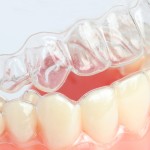
The aim of this study was to evaluate and compare the costs for the three orthodontic retention methods using a cost-minimisation analysis (CMA).
The cost analysis was based on previous randomised controlled trial data (Dental Elf 22nd Jan 2013). Patients were randomised into 3 groups with retention appliances being placed within 1 hour of debonding. Group 1 (n=25) was provided with a vacuum formed retainer (VFR) covering the palate and the maxillary anterior teeth from cuspid-to-cuspid and a bonded cuspid-to-cuspid retainer (CTC) in the lower arch. Group 2 (n=25) had an identical VFR combined with stripping (S) of the lower anterior teeth and no lower retention device. Group 3 (n=25) had a prefabricated positioner (P) covering all erupted teeth in the maxilla and the mandible. Group 1 & 2 were instructed to wear the VFR 22–24 hours per day for 2 days and nights and then during the night for 12 months. In-group 3 the positioner was to be worn for 30 minutes during daytime and during sleep for 12 months.
Direct costs and indirect costs were calculated. Direct costs included, material costs (i.e. impression material, orthodontic bonding material, laboratory material and fees, consumables, etc.) and treatment time costs (i.e premises and equipment costs, maintenance, cleaning, staff costs etc). Indirect costs included loss of school time, travel to clinic time. Most children attended without parents, as the clinic was close to school so parental costs were not included. Societal costs were defined as the sum of direct and indirect costs. All costs were based on 2013 prices and were expressed in Euros (€). All societal costs were estimated for 75 patients regardless if they attended the 2-year follow-up or not.
- One patient from group 1 and 2 from group 2 failed to attend 2-year review.
- The average direct, indirect and total costs for each group are shown in the table below.
|
Direct costs |
Indirect costs |
Societal care costs |
Additional unscheduled care costs |
Total costs |
|
| Group 1 |
€438 |
€59 |
€497 |
€32 |
€529 |
| Group 2 |
€395 |
€56 |
€451 |
€12 |
€463 |
| Group 3 |
€372 |
€48 |
€420 |
€0 |
€420 |
The authors concluded
After 2 years of retention in compliant patients, the cuspid retainer (group 1) was the least cost-effective retention appliance. The CMA showed that for a clinically similar result there were differences in societal costs, but treatment decisions should always be performed on an individual basis and not only from economical aspects.
Comment
The original RCT found no difference in the effectiveness of the three retention methods at two years and provides a strong basis on which to calculate the cost -effectiveness of the various techniques. In is interesting that there were no losses or breakages of the positioner device (group 3) in addition this group spent less time in the clinic, which would have reduced costs. As the authors point out the majority of the patients were local to the clinic with most attending without parents. Parental attendance and travel time would have an important impact on direct costs.
Links
Tynelius GE, Lilja-Karlander E, Petrén S. A cost-minimization analysis of an RCT of three retention methods. Eur J Orthod. 2013 Oct 1. [Epub ahead of print] PubMed PMID: 24084630.

“@TheDentalElf: Orthodontic retention – cost analysis three different appliances http://t.co/IsUJMFXHzw” you have beaten me to this one !
[…] Dental Elf – 14th Mar 2014 – Orthodontic retention – cost analysis of three different … […]